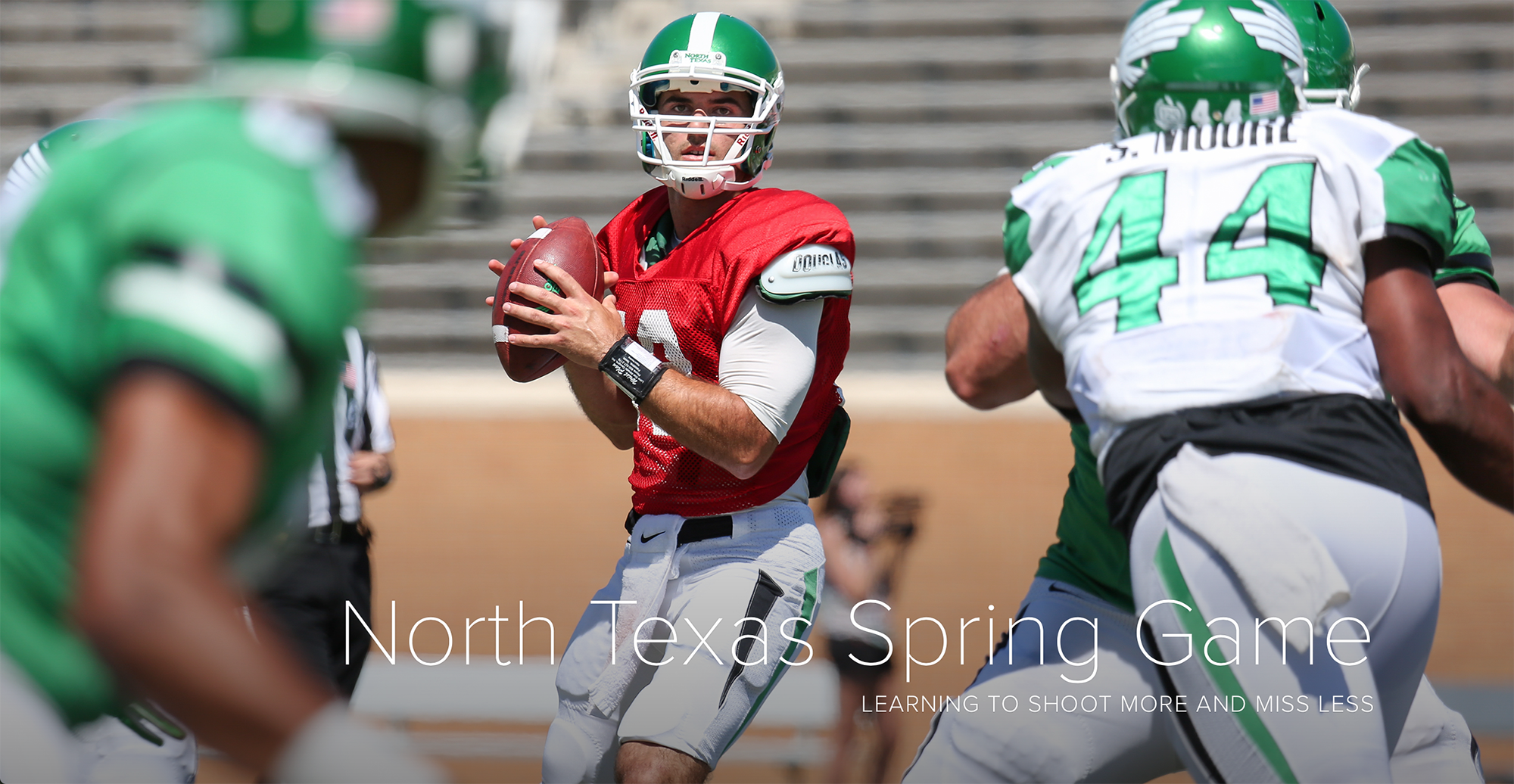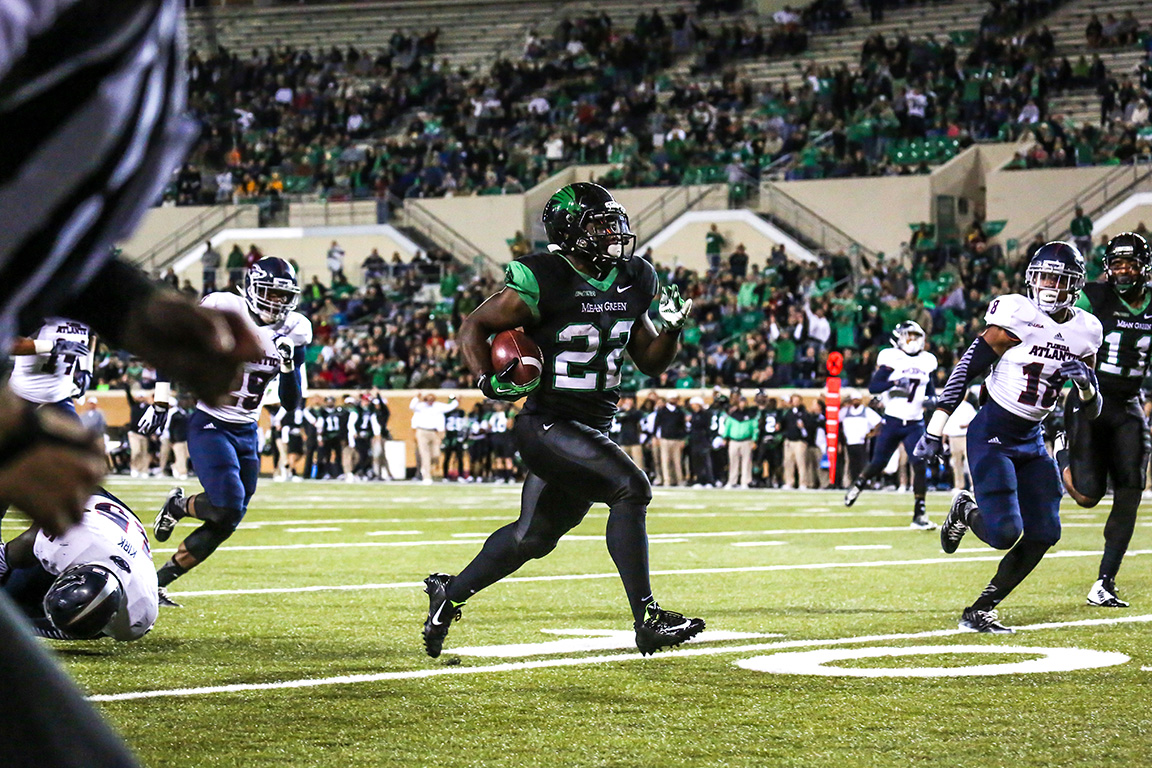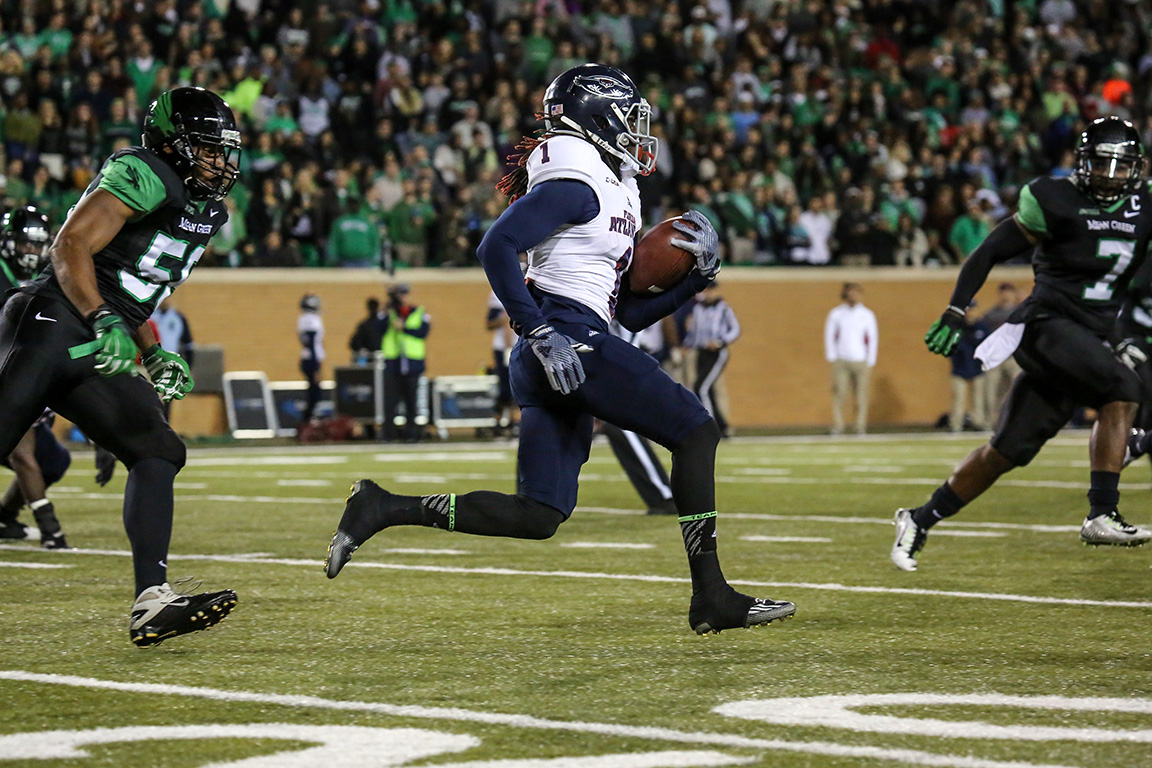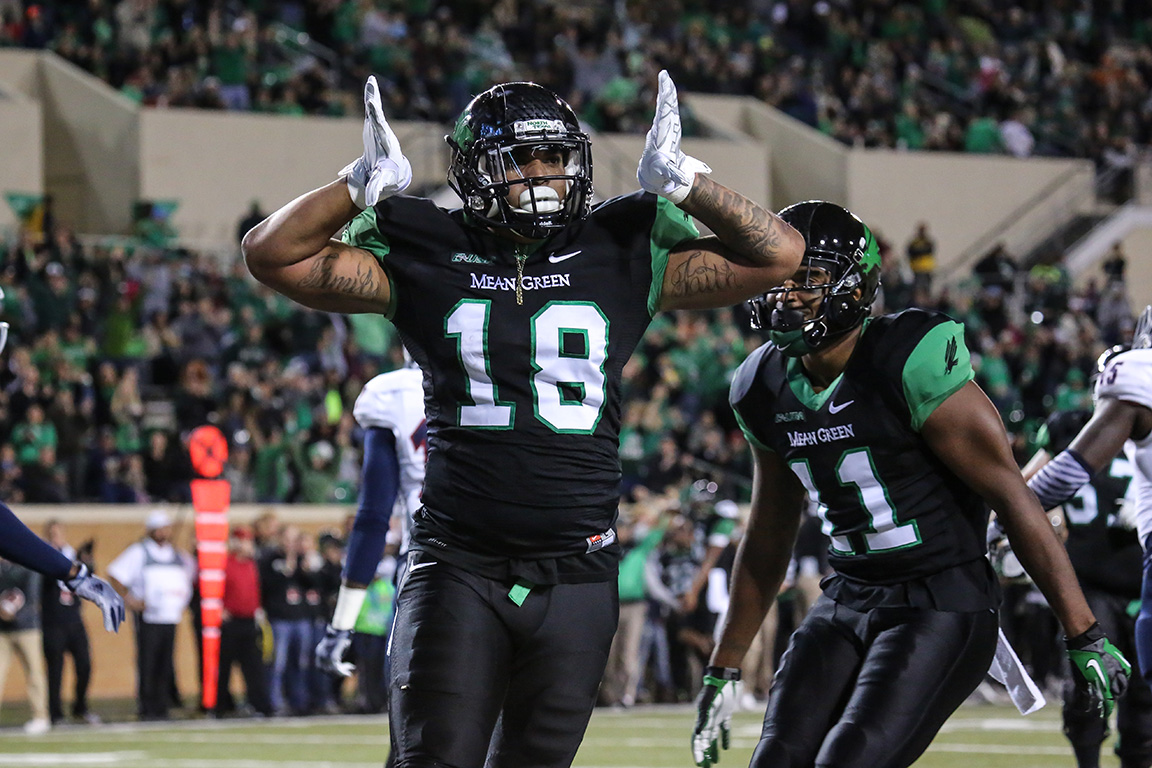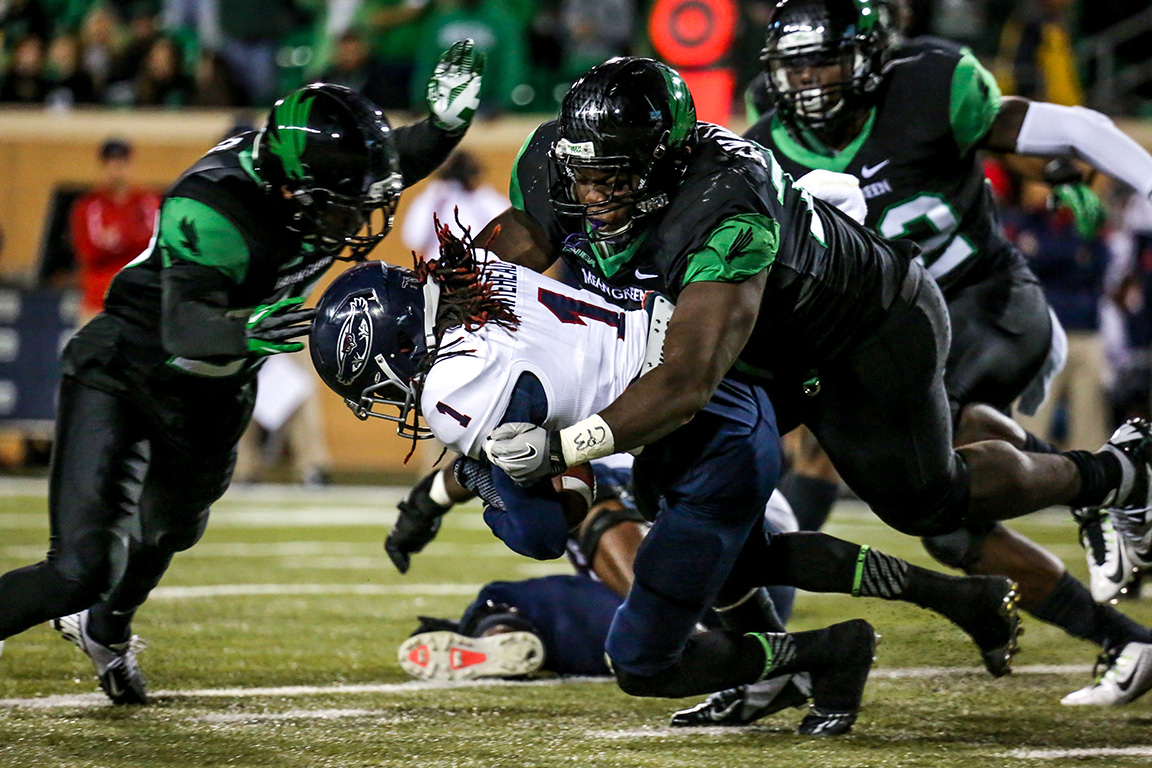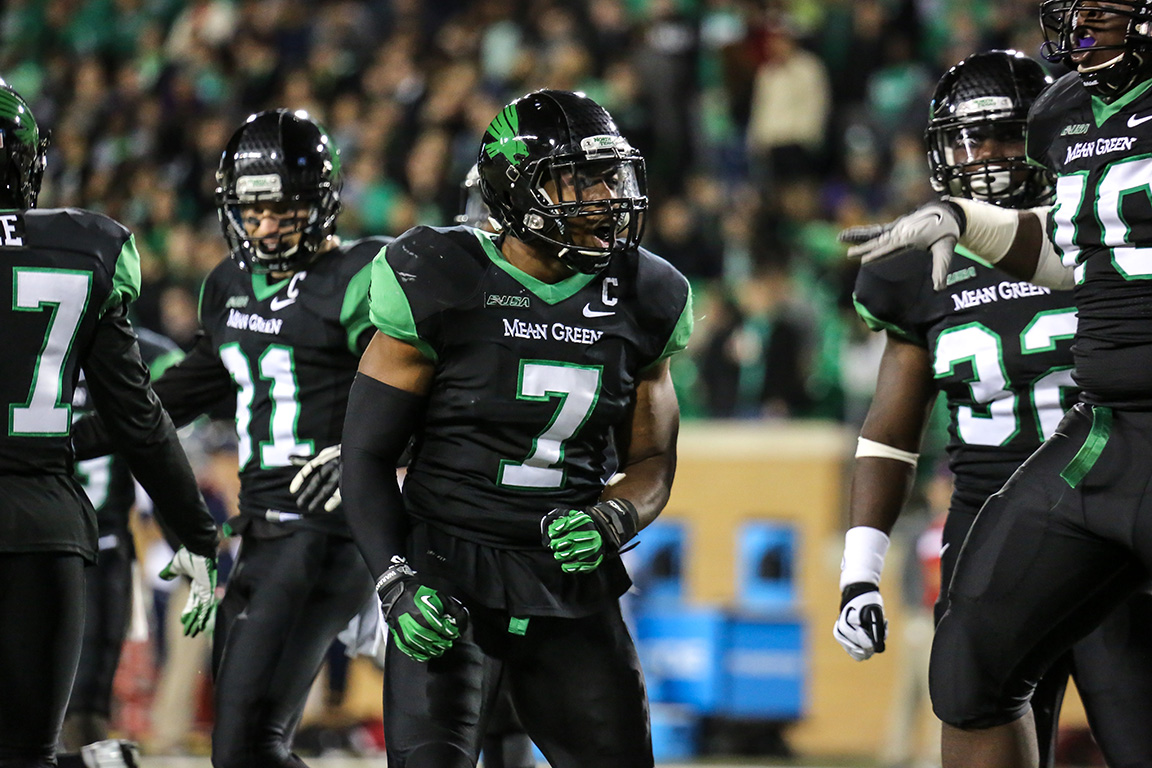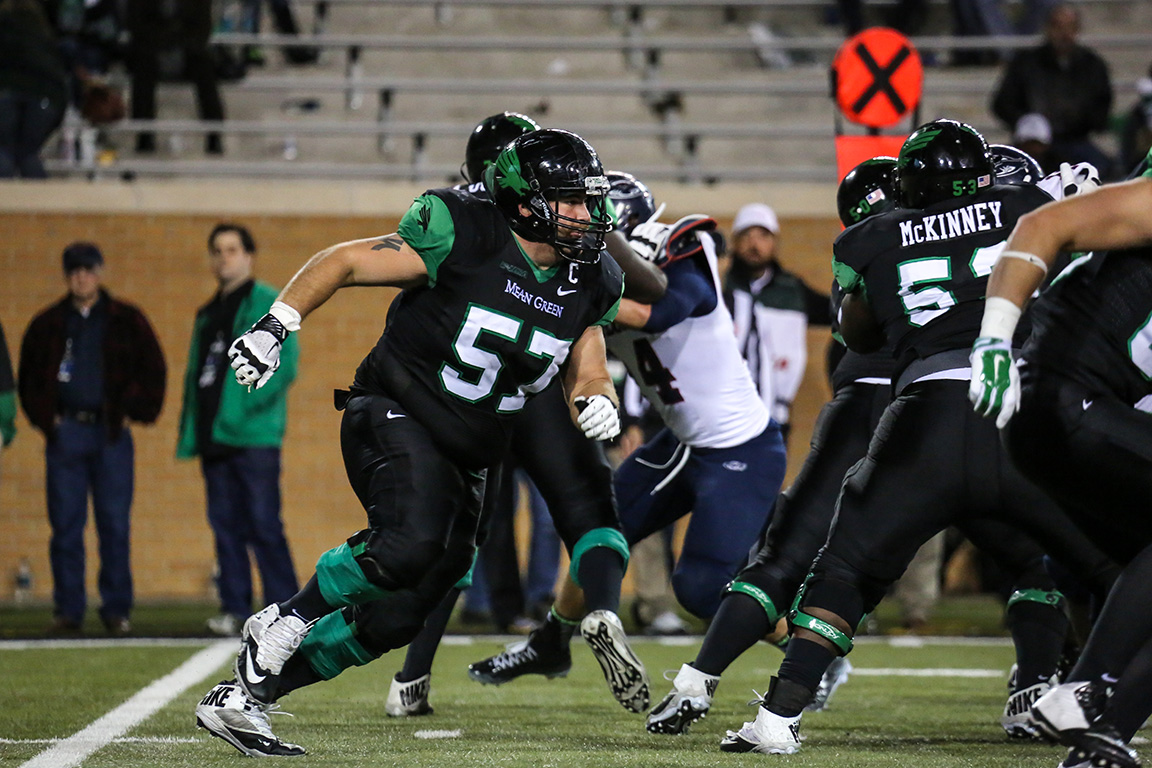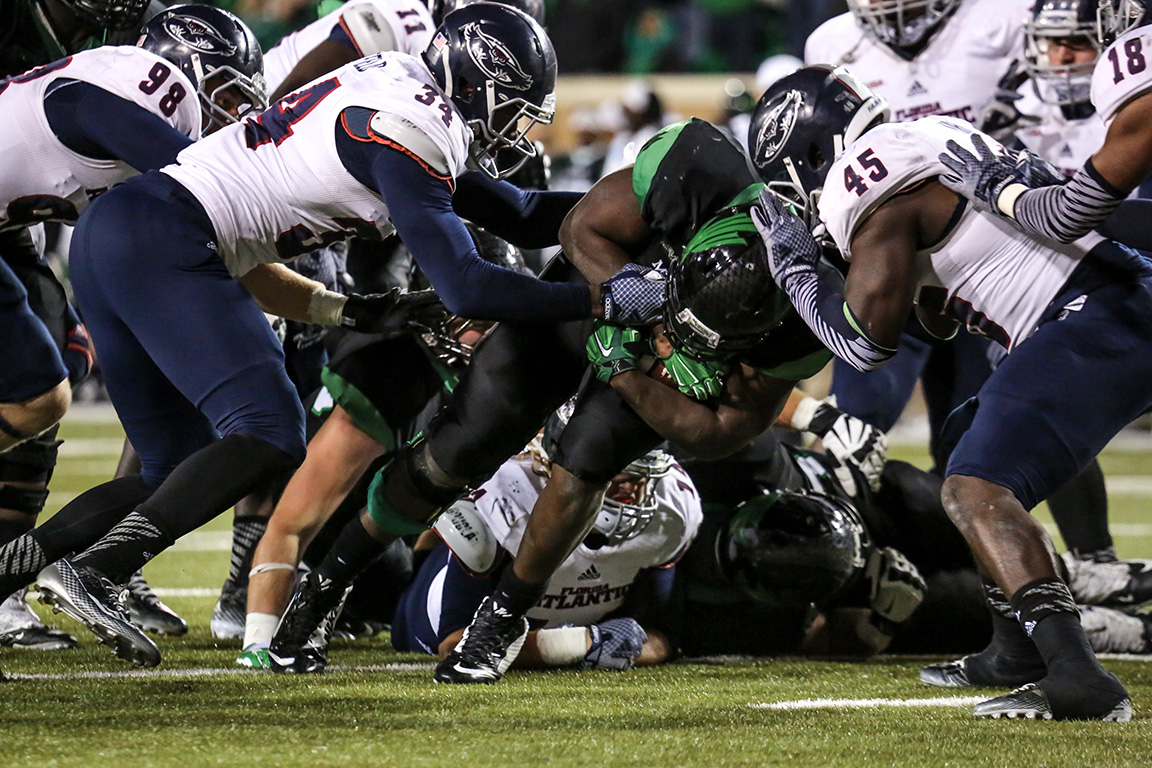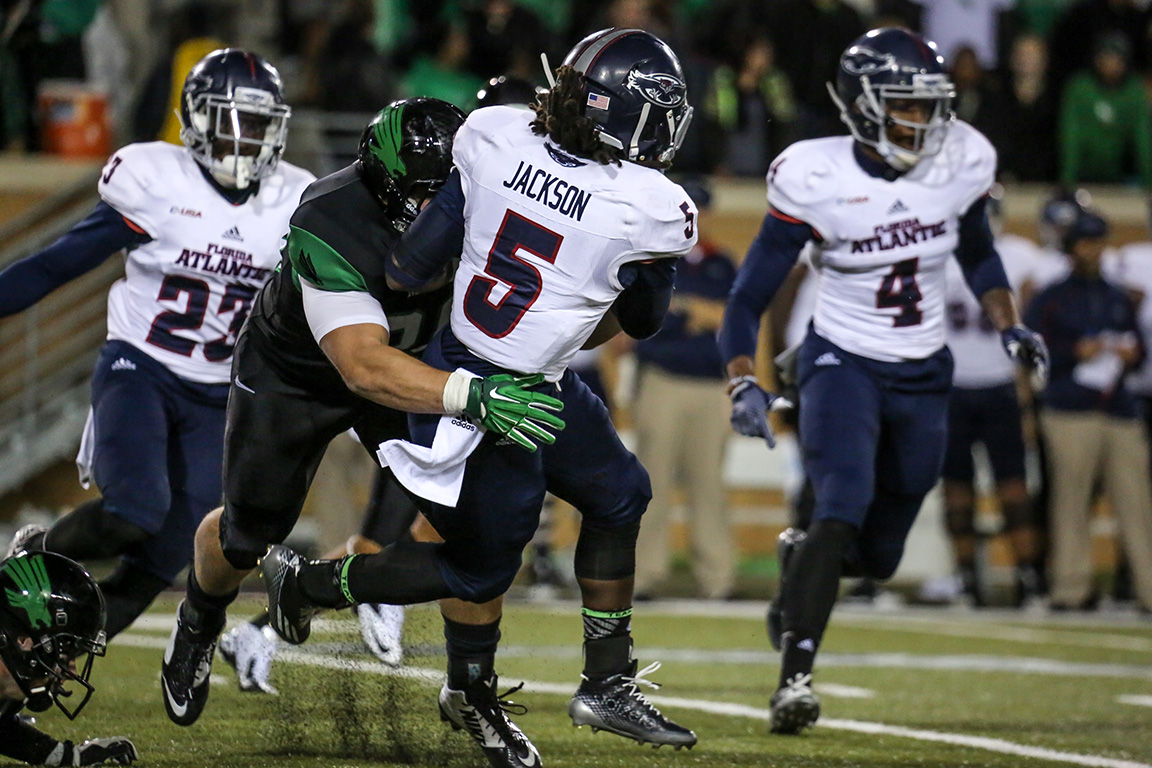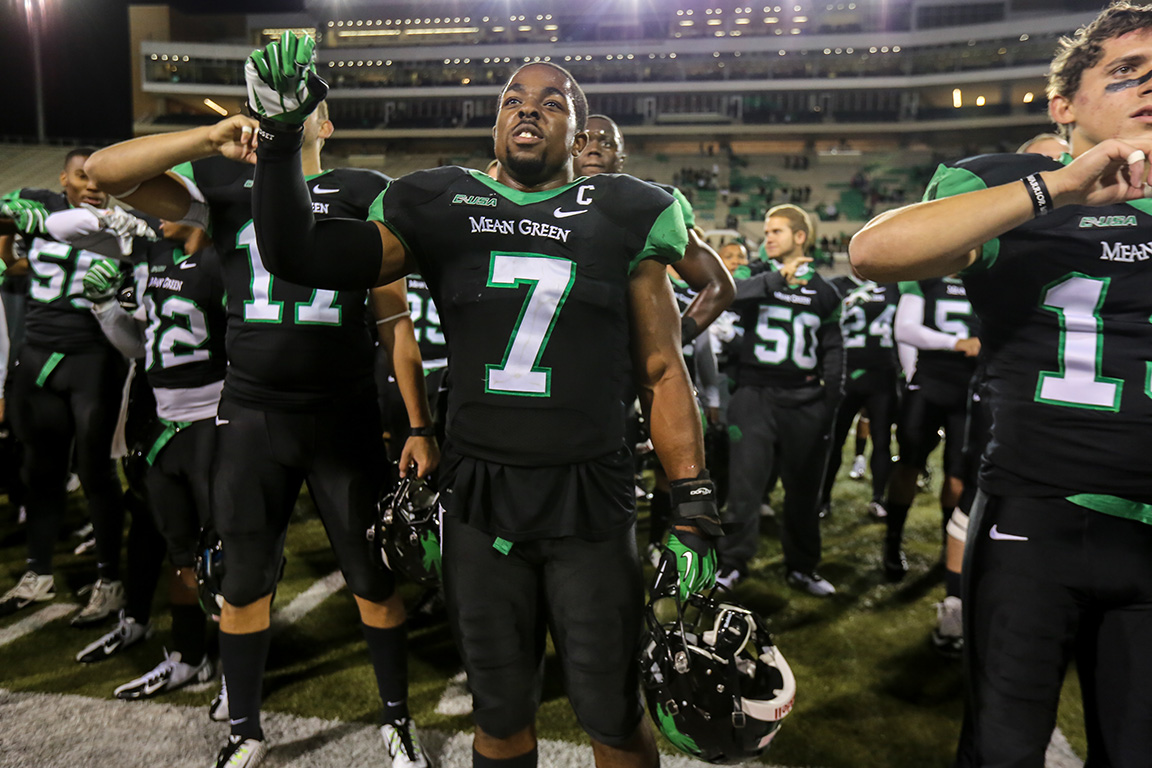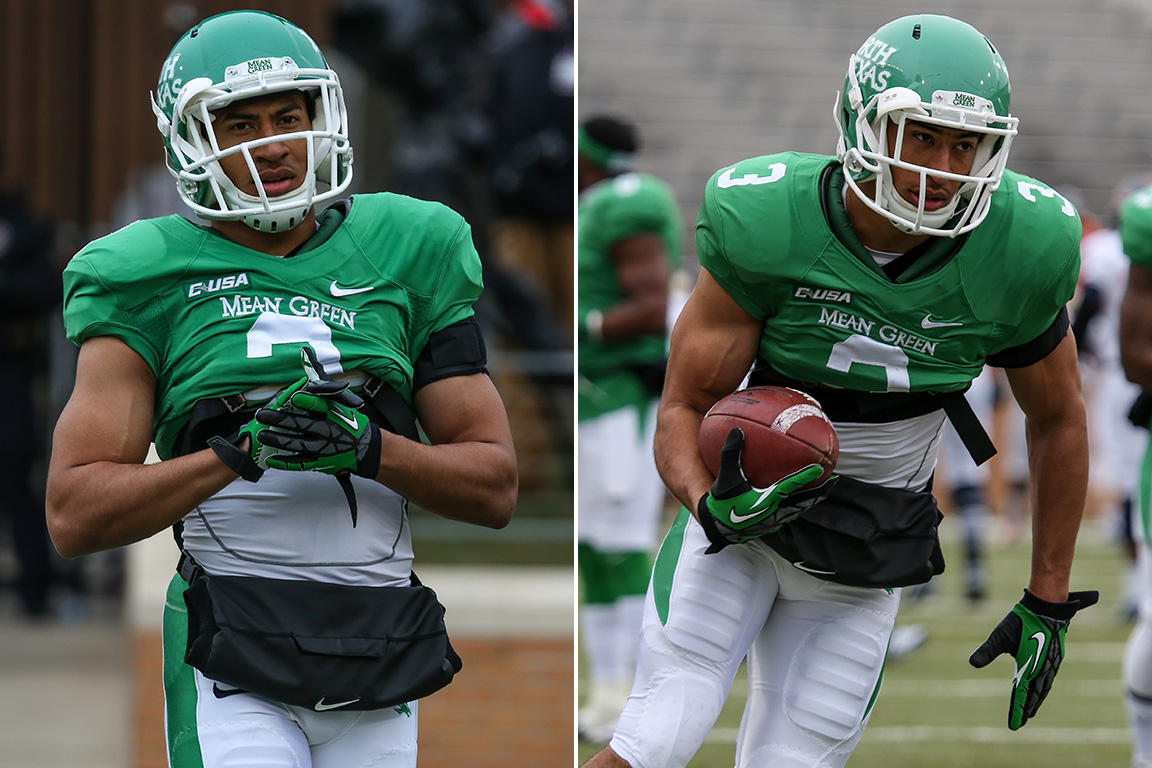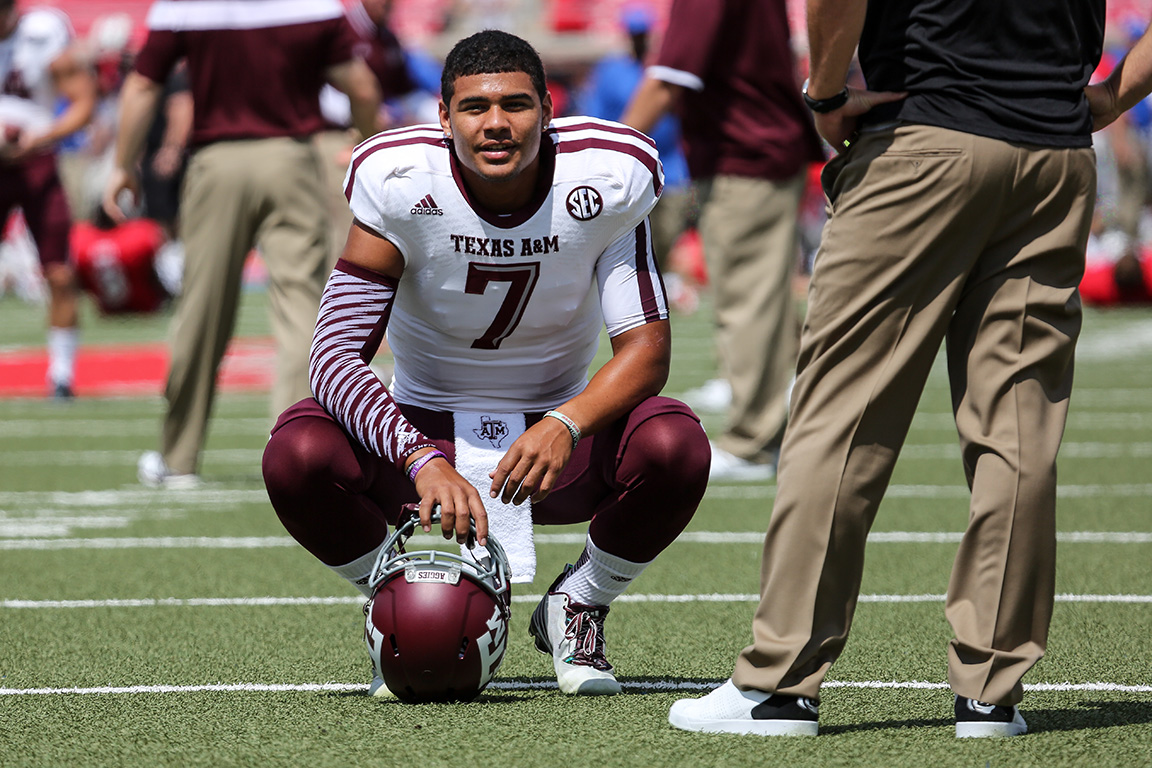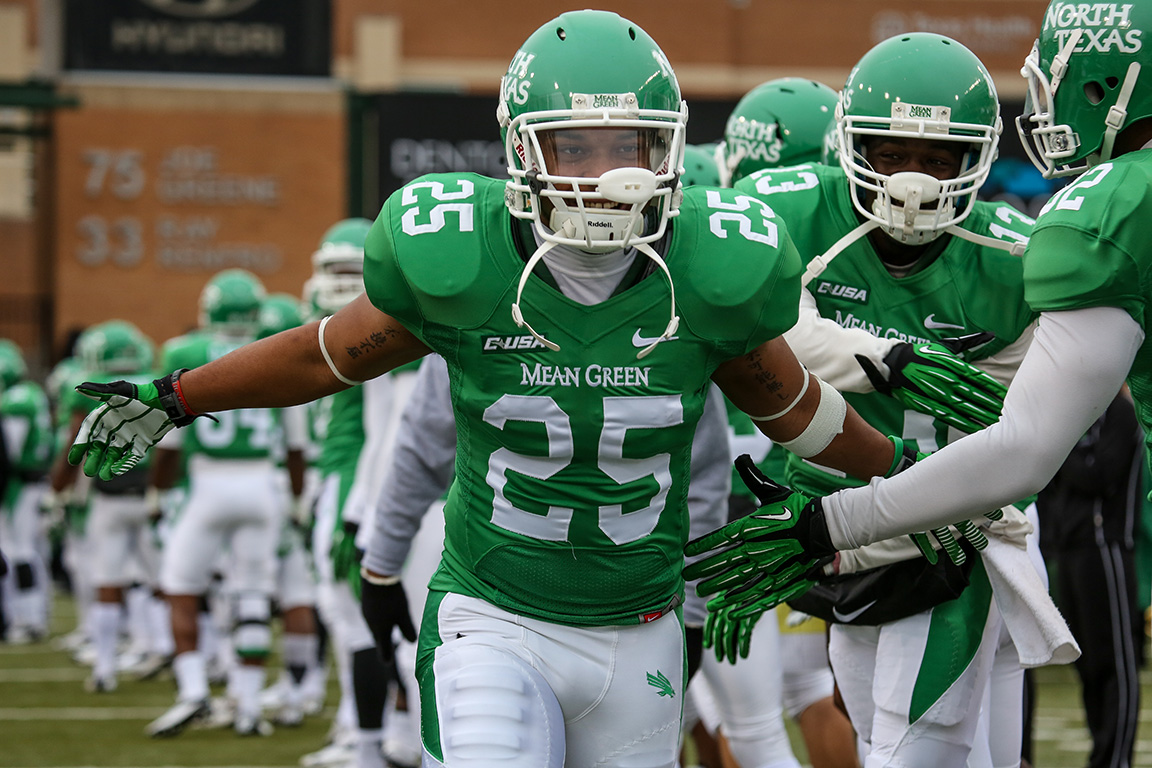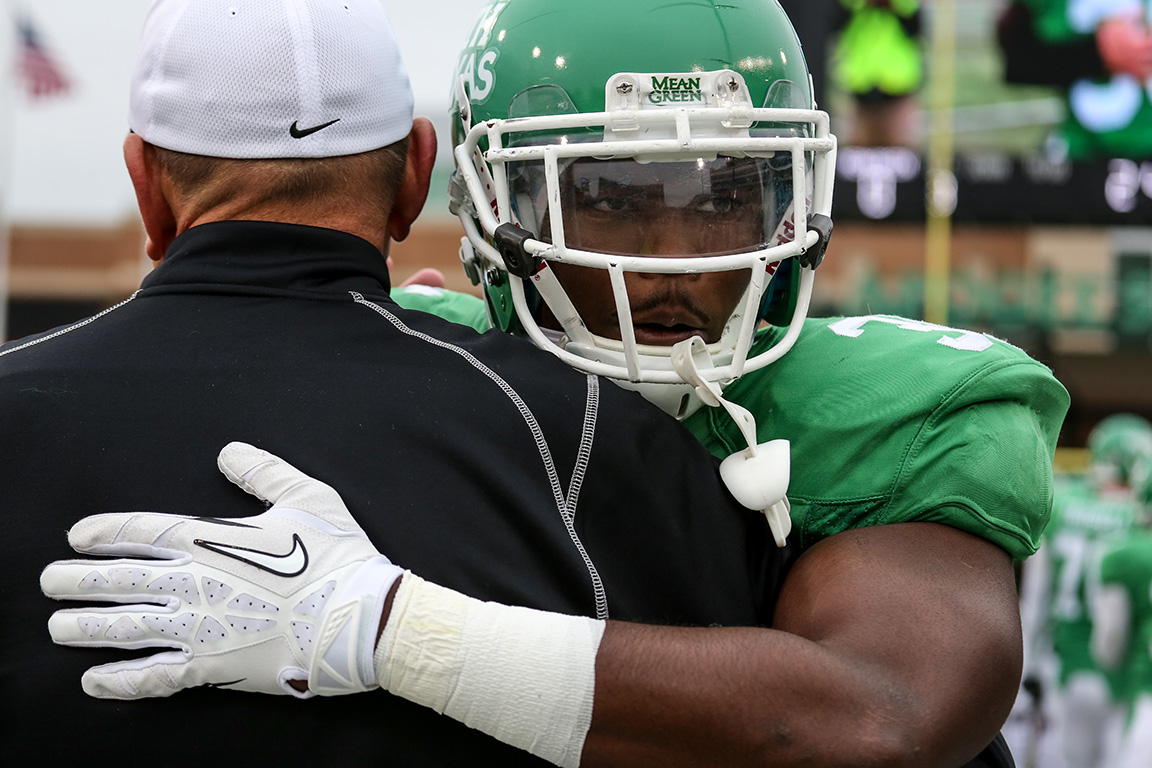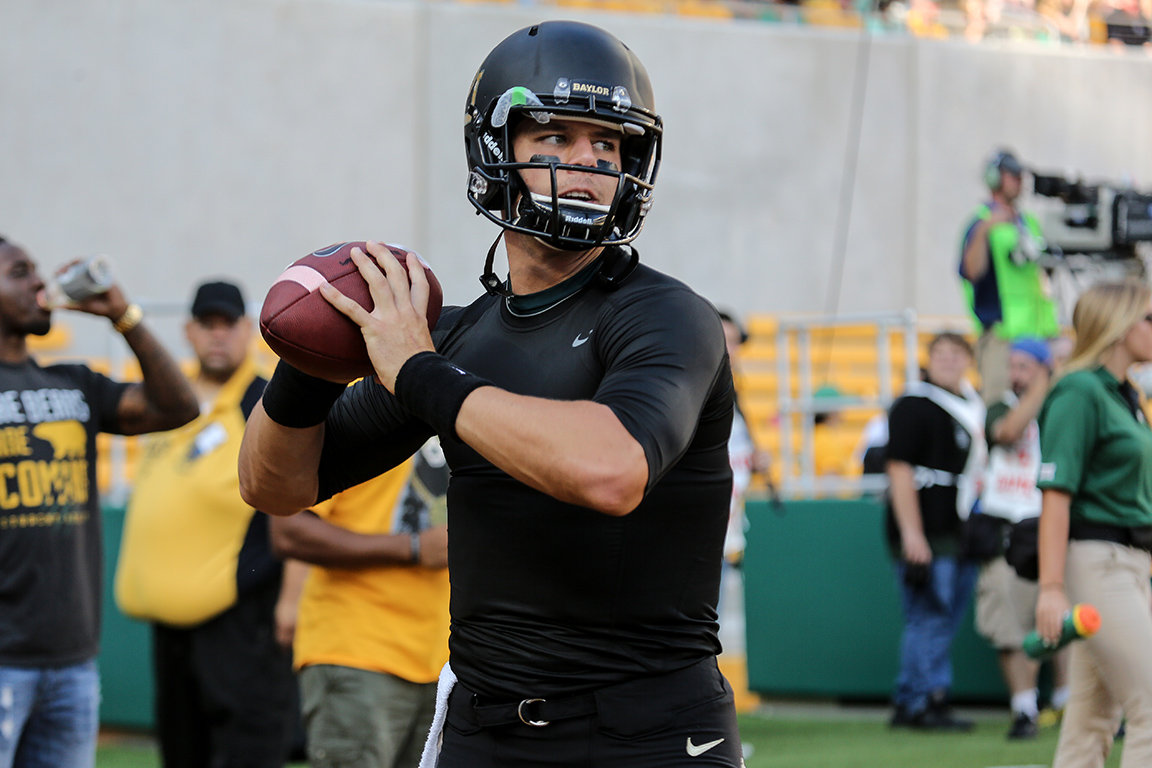As I mentioned in my last post, spring games are generally meaningless but for a young sports photographer like me I'll take every opportunity I can get to improve my shooting skills. And because I took the opportunity to shoot North Texas' spring game in Denton I had a huge revelation: I need to shoot more to miss less.
It seems like a simple and obvious statement but "spraying and praying" isn't how I typically shoot. I'm usually much more calculated and waiting for "the moment." In football, and any other sport, the game just moves too fast and waiting for a moment means you'll usually miss it. That's how it was for me. So many of my sports photos are taken just after the moment I really wanted to shoot. I want the photo of the receiver fully extended in the air catching the football or I want the linebacker right when he's making initial contact with the ball carrier but I always release the shutter just a little too late because I was "waiting" for it.
This issue has a little to do with the equipment I'm using. Typically I'm shooting with a Canon 5D mark III with a 100-400mm f/4.5-5.6L so I'm only getting about 6 frames per second compared to the 12 or 13 of the 1DX and my lens doesn't focus as fast as the 400mm f/2.8L. But this time as I saw the ball in the air or I saw the ball carrier getting close to colliding with a defender I shot much earlier than I normally do and let AI Servo do its work and it paid off pretty well. I ended with a few more peak action shots of receivers and defenders than usual but I still need to work on tracking the ball better as it makes its way through the air to a receiver.
The goal is always to be better than I was last time and shooting this game really helped me.
